The Grace and Frankie Exit Interview with Creators Marta Kauffman & Howard J. Morris
- Oops!Something went wrong.Please try again later.
- Oops!Something went wrong.Please try again later.
- Oops!Something went wrong.Please try again later.
In an era marked by increasingly limited attention spans and never-ending streams of fresh content to consume, it's a remarkable feat for a show to reach the distinction of being the longest running series on the largest and most prolific streaming platform on the planet. Especially more so when the collective age of its two leads is 166.
Yet it's also hardly remarkable at all given the series in question: Grace and Frankie, the beloved comedy starring Jane Fonda and Lily Tomlin as its titular octogenarian heroines, who become reluctant roomies turned best friends after their respective husbands Robert and Sol (Martin Sheen and Sam Waterston, another most delectable pairing) leave them for each other.
Since its debut in 2015, the show, which just wrapped its seven-season run on Netflix, has fearlessly and hilariously upended womanhood, aging, sexuality, divorce, mortality, friendship, and what it means to start anew in the twilight of life—and not give a fuck what anyone else thinks.
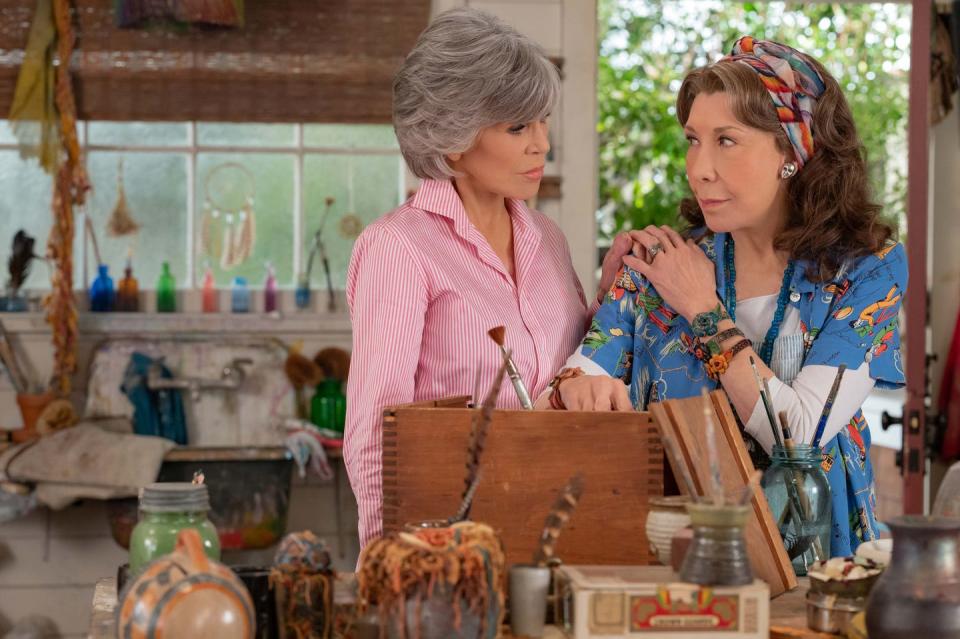
It has approached serious issues with humor and a touch of irreverence—and been unafraid to really go there. Over the course of 94 episodes, Grace and Frankie have invented sex toys for the elderly, patented rising toilets for the mobility-impaired, smuggled in senior citizen meds from Mexico, escaped from an assisted living facility in a golf cart, and broken into a home through its doggy door. Their adventures have been as outrageous as they have been a salve of hope and levity in difficult times—invaluable lessons on how to blitz life's lemons into lemonade.
"It doesn't matter if no one's doing it or that the prevailing wisdom is that people won't watch TV shows about older women," says Howard J. Morris, who co-created Grace and Frankie with Friends mastermind Marta Kauffman. "You just have to do your thing. Sometimes it works out and sometimes it doesn't—but it's also good to get Jane Fonda and Lily Tomlin to do your show." (Not to mention a roster of OG Hollywood legends to make appearances—Sam Elliott, Dolly Parton, Rita Moreno, Lisa Kudrow, Debbie Allen, Craig T. Nelson, Estelle Parsons, George Hamilton, and Ed Asner are just a sampling of the cameos.)
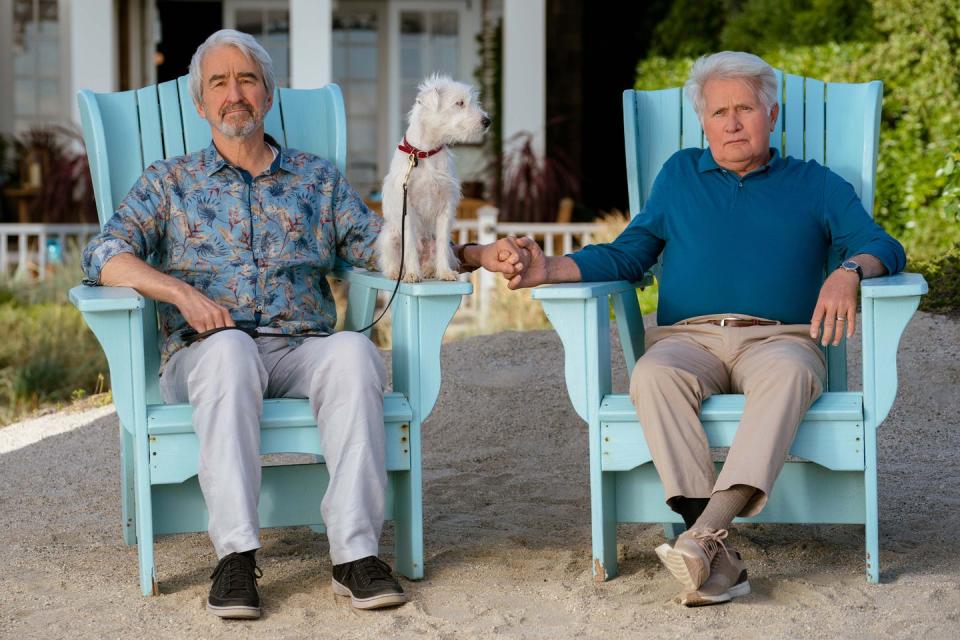
To celebrate the end of seven seasons, T&C spoke to Kauffman and Morris on their lasting memories, where they mined their funniest plot ideas, and the legacy of Grace and Frankie. Excerpts from the conversation, below.
Watch Grace and Frankie on Netflix
Did you ever think Grace and Frankie would run for this long?
Marta Kauffman: You don't dare to dream this. We were hoping for three seasons, maybe five if we were extra, extra lucky.
Howard J. Morris: We started off with a cast whose leads were in their late 70s, so no one is more surprised that it's the longest running show than Marta and myself.
How, if at all, has the mission statement of the show evolved since the beginning?
MK: I don't think that changed because we wanted to do a show about women of a certain age and a show that says you can start your life over at any time. And even though the first season was primarily about the women dealing with their husbands coming out, falling in love, and marrying, the show was still always about starting your life over—and hope.
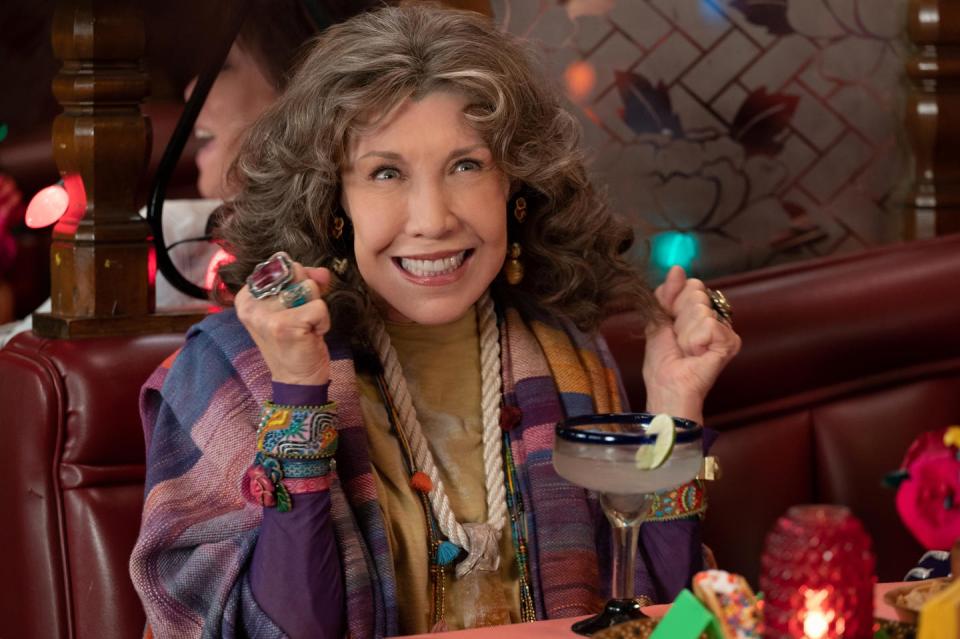
Grace and Frankie always managed to have just the right amount of humor and outrageousness in tackling serious topics. How did you strike that balance?
MK: As we all know, there is comedy in tragedy. The two are very intertwined. So we were able to tackle things like Babe wanting them to assist in her suicide [season 2, episode 12], or the gun episodes [season 3, episodes 4-6]. The important thing is that we always rooted it, but kept finding the comedy.
HJM: And sometimes you find the comedy in things that you actually take seriously that other people don't—like sexuality in older women and the problems they have. Some of the comedy for the vibrator and the lube comes from the fact that we took it so seriously.
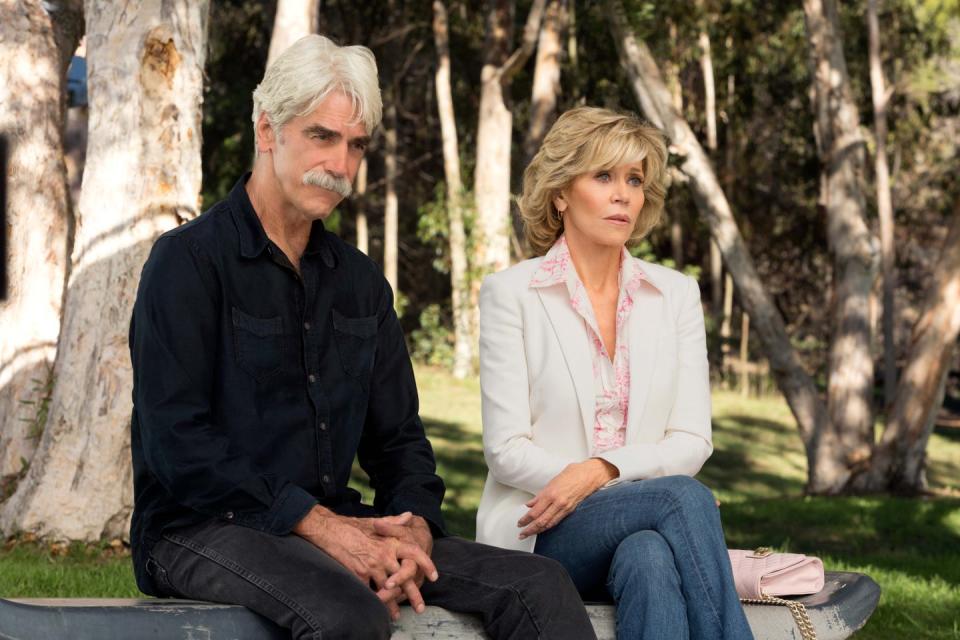
Where did you come up with ideas like the Ménage à Moi and Rise Up?
HJM: They all came from somebody talking about their mother. I would literally go online and seek out problems older women are having and I remember somebody was complaining about how the buttons were too small on her vibrator. So like that was a real thing, but also funny. And with the Rise Up, realizing how people actually have trouble getting up. It was always based on a real need.
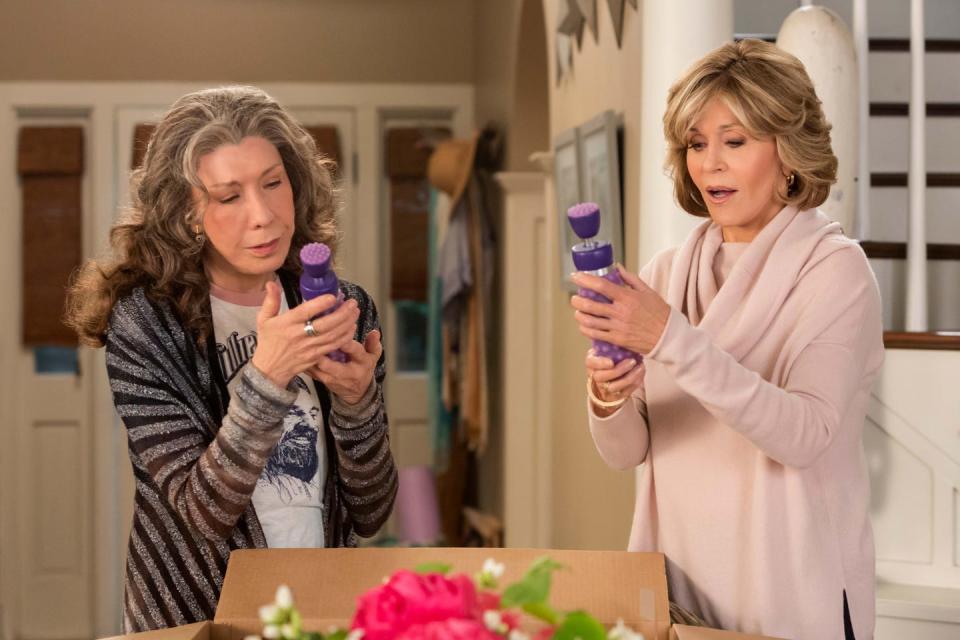
Were you surprised at Grace and Frankie's appeal to an audience of all ages?
MK: When we were starting out they were thinking more niche television and the fact that it got—and maintained—a wider audience was surprising to all involved. Not that we're complaining.
HJM: It was exciting to talk to younger people and have their view on it—that it gave them hope about old age.
Years from now, what will be your most lasting memory from the show?
MK: It's a little bit like asking who your favorite baby is. One of the moments that really sticks with me is when Grace takes off on her makeup [season 4, episode 4]. It was brave for both the character and the actor. I know a lot of women struggle with that, not wanting people to see what they really look like.
And what do you consider the secret to longevity, both in Hollywood and in life?
HJM: Luck. And just keep moving forward.
MK: I know it's kind of trite, but laughter. It's how we got through seven seasons. And a couple of good cries help, too.
You Might Also Like

